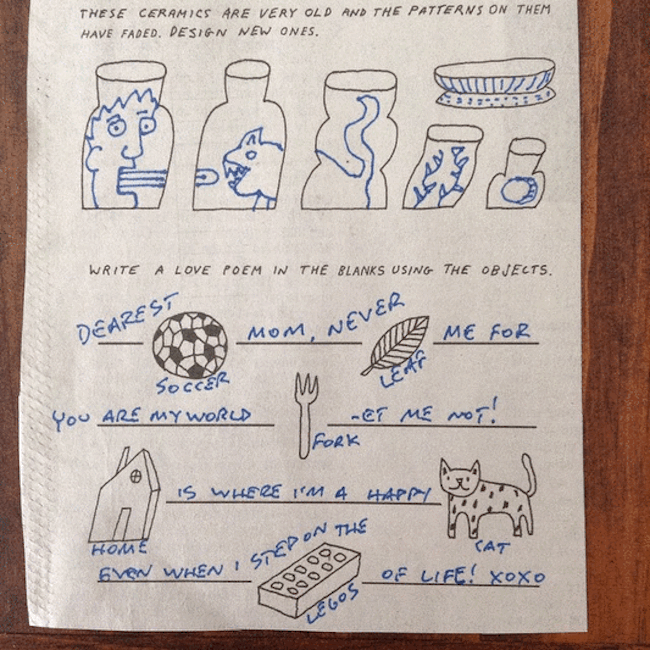Kurt Vonnegut once wrote, “To practice any art, no matter how well or badly, is a way to make your soul grow. So do it.”
I often think of this quote as I’m banging my head against my keyboard, questioning why I continue to write even though it’s obvious to myself that I’m a hack. The compromise in these moments is that having any sort of output justifies my existence. Completing something external to myself, even if I hate it, feels good. For other people, creating is a way to stay active, even if you’re trapped in an existence that feels passive. I knew a guy once who whiled away the weary hours at his call center job by popping some prescription drugs and coloring in a coloring book. That activity, he said, kept him sane while he was trapped in his cubicle.

Writing for the New York Times, Laura M. Holson reports that guides for amateur creativity are becoming a business. What was once an activity that could keep the ennui monster at a distance for a few precious hours has been picked up, for better or worse, by the holistic health community or people seeking to improve their careers. Adult coloring books or guides for Zentangle, a form of meditative drawing, are swarming bestseller lists this year.
“A number of books published recently suggest that creativity has the same holistic benefits as a weekend at Canyon Ranch Resort and Spa, boosting self-esteem and relieving stress. Zentangle, say practitioners, is helpful too as a dieting aid. Even the well-regarded Mayo Clinic recommends the benefits of painting and ceramics. In a recent four-year study, it reported that people who took up creative activities in middle age were less likely to suffer memory loss.
“Of course some companies have embraced creativity as a marketing gimmick. On a recent trip to Venice, Calif., I visited a pop-up shop — half workshop, half store — for a new lifestyle brand called “5 Points” that offered customers “ways to bring the benefits of creativity into the world.” The small space included a near-empty wall set up for would-be artists. But the store mostly was crowded with shoppers buying stuff other people made. As if to underscore creativity’s consumer appeal, a patio across the street next to a clothing boutique had a sign that beckoned, ‘Welcome to our creative oasis.'”

Please read the full article linked above. As a trend, it appears that society at large is discovering the mental health benefits of creativity, something that creatives have known all along. This trend could be important for the arts field, because for too long society has viewed creative pursuits as secondary activities at best, frivolous at worst. Hopefully it reaches such a scale that school districts will stop slashing their budgets for art and music programs.
Of course, it’s difficult to tell where the trend will go, once marketability gets its claws on it. Perhaps the new age community will start their own coloring cults next.
We’re interested in how our readers have engaged with this trend. Have you introduced an outsider to clay as a way to help their mental health? Did you come into this field for a similar reason? How do you feel when you’re in such a process? Let us know in the comments.
Bill Rodgers is the General Editor at the CFile Foundation for Contemporary Ceramic Art + Design.

Images from José Ja Ja Ja. Courtesy of the New York Times.

Add your valued opinion to this post.